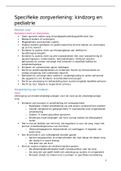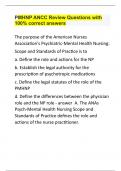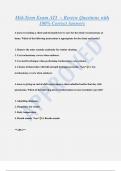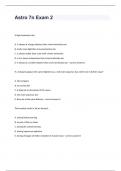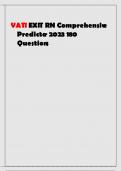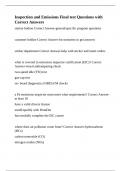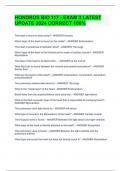Exam (elaborations)
SHS 402 EXAM ACTUAL QUESTIONS AND ANSWERS 100% CORRECT
- Course
- Institution
SHS 402 EXAM ACTUAL QUESTIONS AND ANSWERS 100% CORRECT What is a diagnostic report and what goes in one? - Answer- Summarizes results of diagnostic evaluation · Background information (reason for referral) · Case history report (Want to know why they think the client is not progressing as ...
[Show more]




